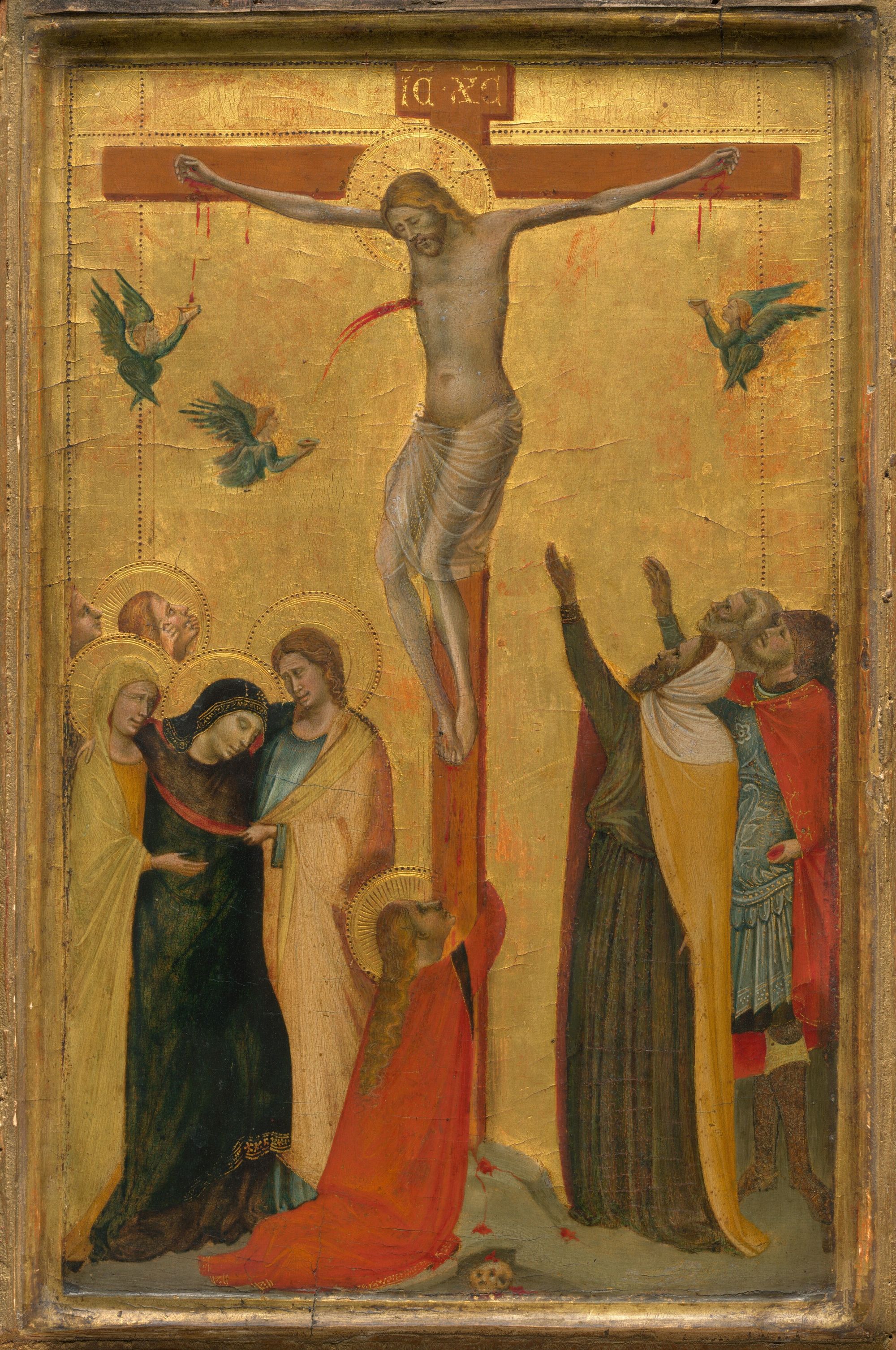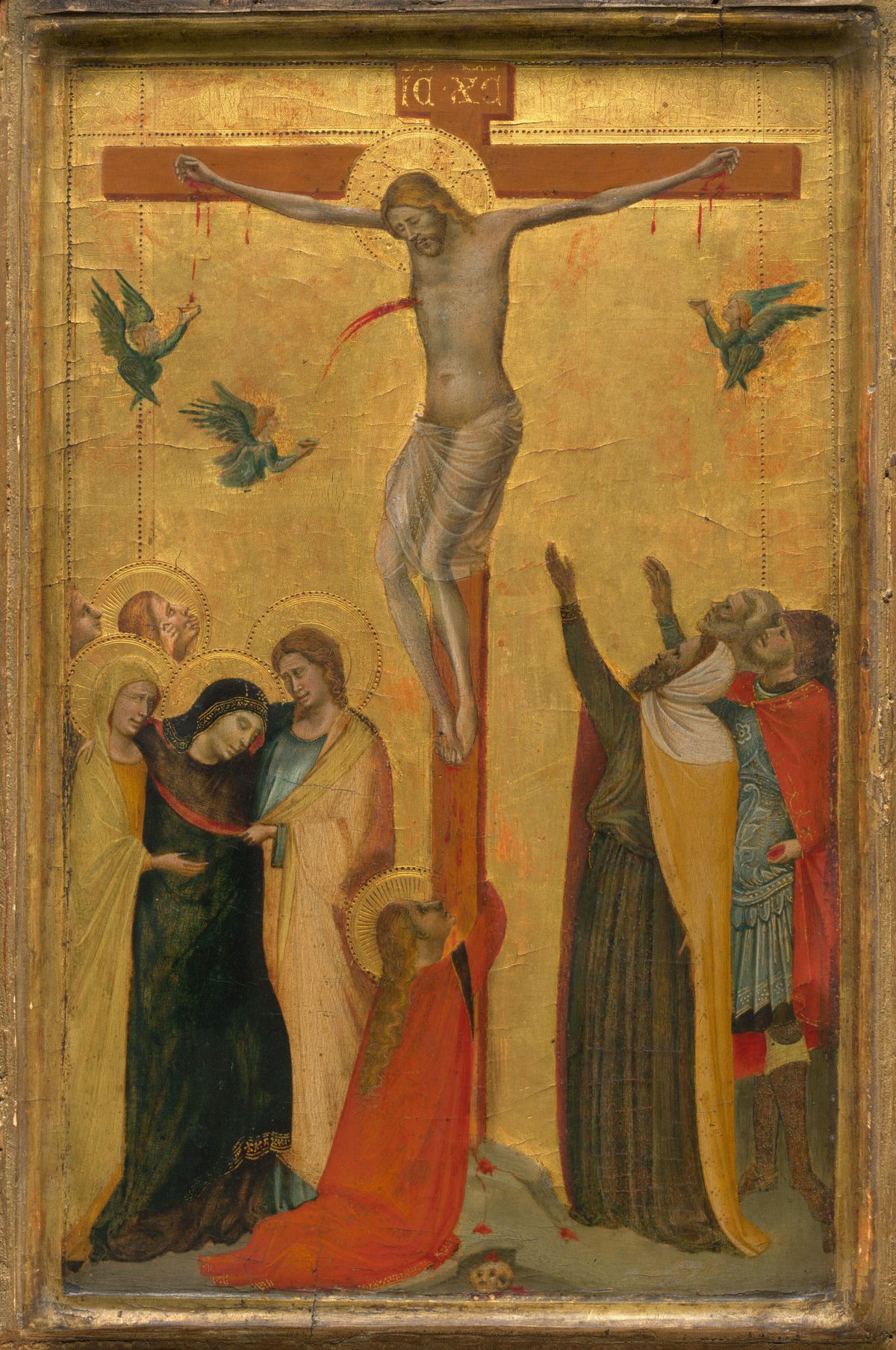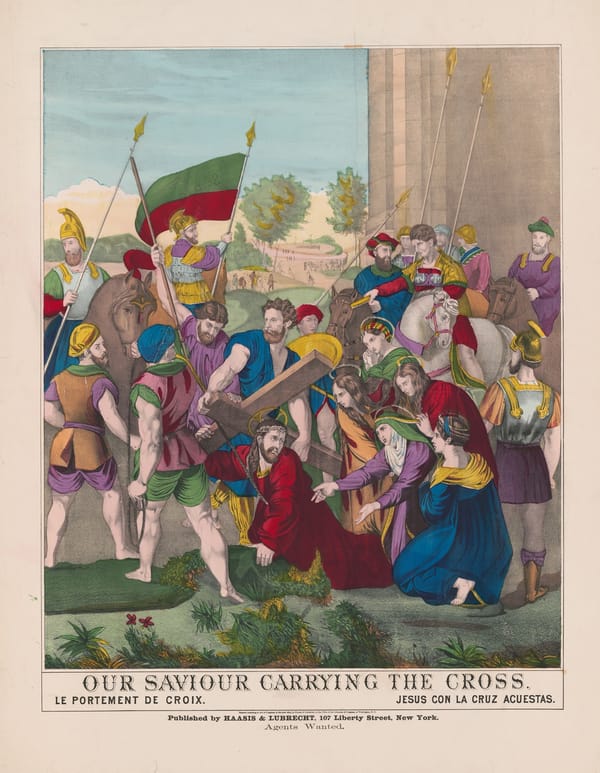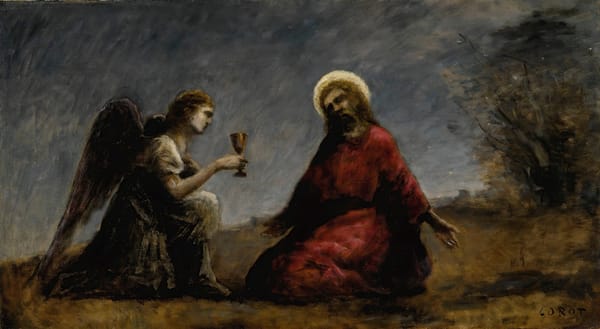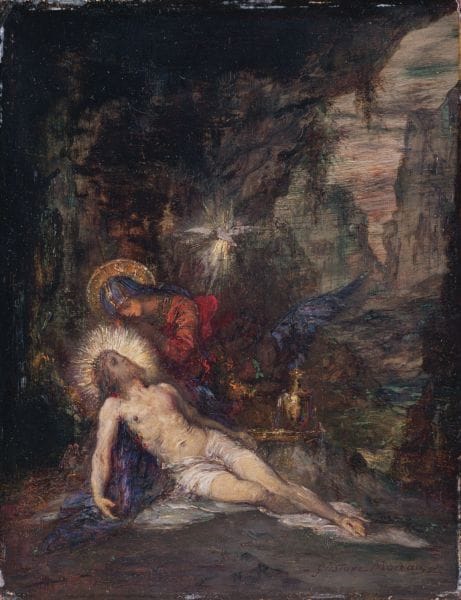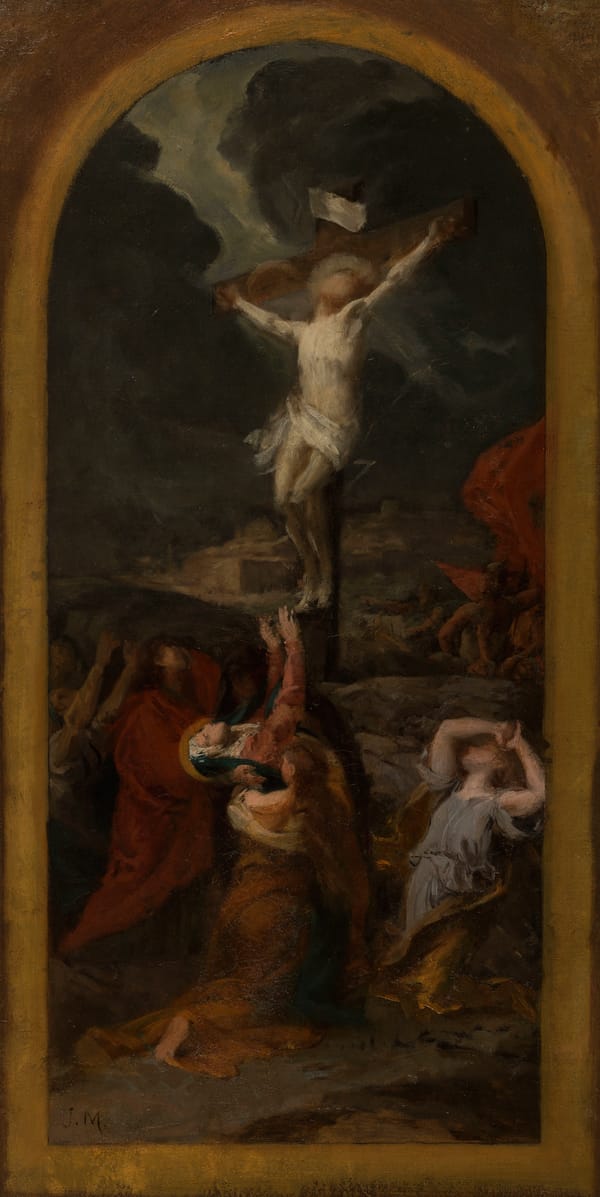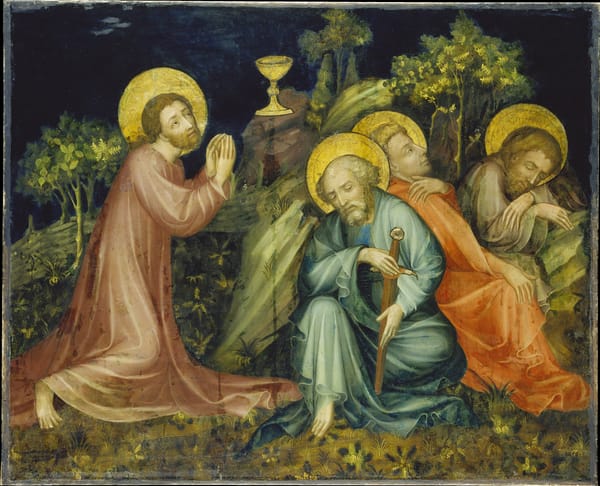This small painting was probably the right-hand side of a diptych with two hinged panels. Very likely the panel opposite depicted the Virgin and Child. The man or woman who meditated on this image during private devotions would have made an intimate connection with the grief of the mourners who stood at the foot of the cross. The Gospels differ in their accounts of the Crucifixion, and so do paintings of it. Here, on the left, the swooning Virgin is accompanied by a group of holy women. One helps support her as she collapses against John the Evangelist. While they look at Mary with tender concern, all other eyes are turned toward Jesus and the angels who collect his blood. Mary Magdalene, recognized by her long flowing tresses, kneels and grasps the cross despairingly. Among the men on the right, in the armor of a Roman soldier, is the centurion who was converted on the spot, saying “Truly, this was the Son of God” (Matthew 27:54).
Small devotional works like this were a specialty of Bernardo Daddi (active by 1320, died probably 1348) and his workshop, one of the busiest in Florence in the first half of the 14th century. During those years, Daddi was the city’s leading painter. He may have studied with Giotto (Florentine, c. 1265 - 1337), adopting Giotto’s new way of giving real-world weight to figures by modeling them with light and shadow. But Daddi’s own style became less solid and more graceful and ornamental over time. The mourners in this work are ethereal, long, and slender, suggesting another influence, this one from the more abstracted and decorative style of Sienese painters.
Free Downloads Below
Hi-Res
1200px
800px
